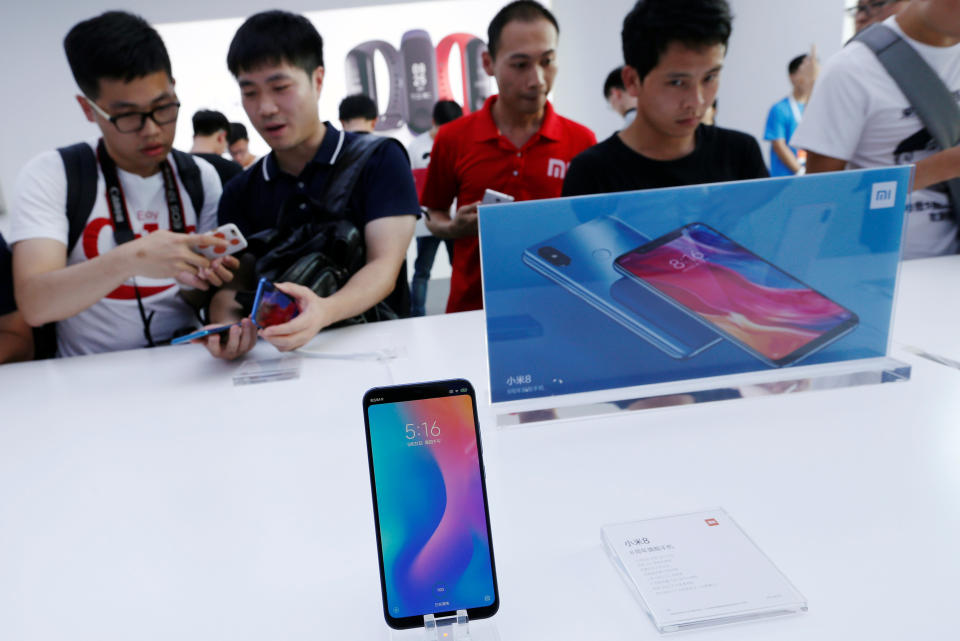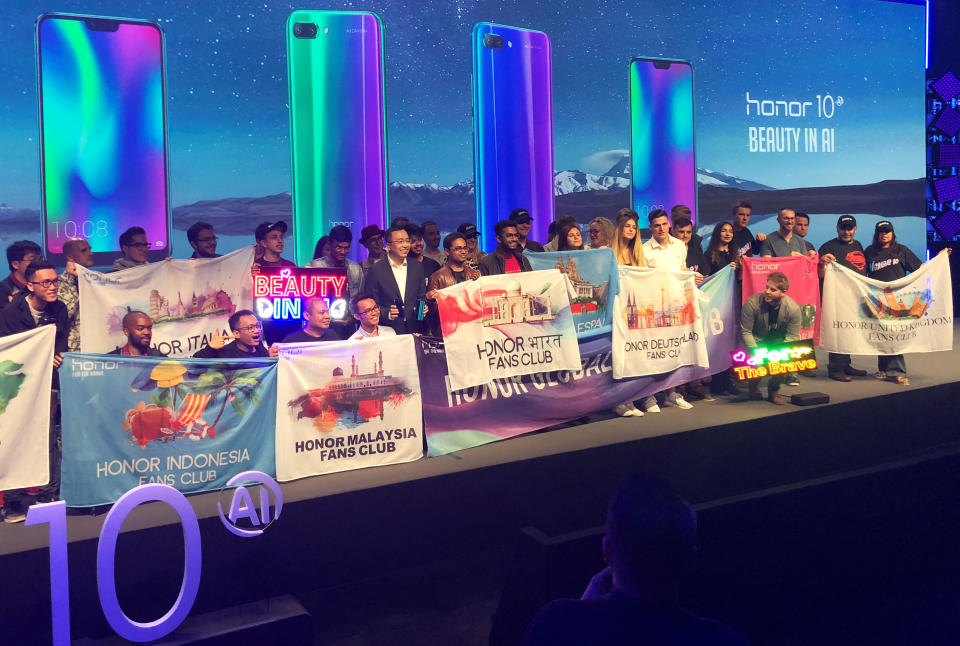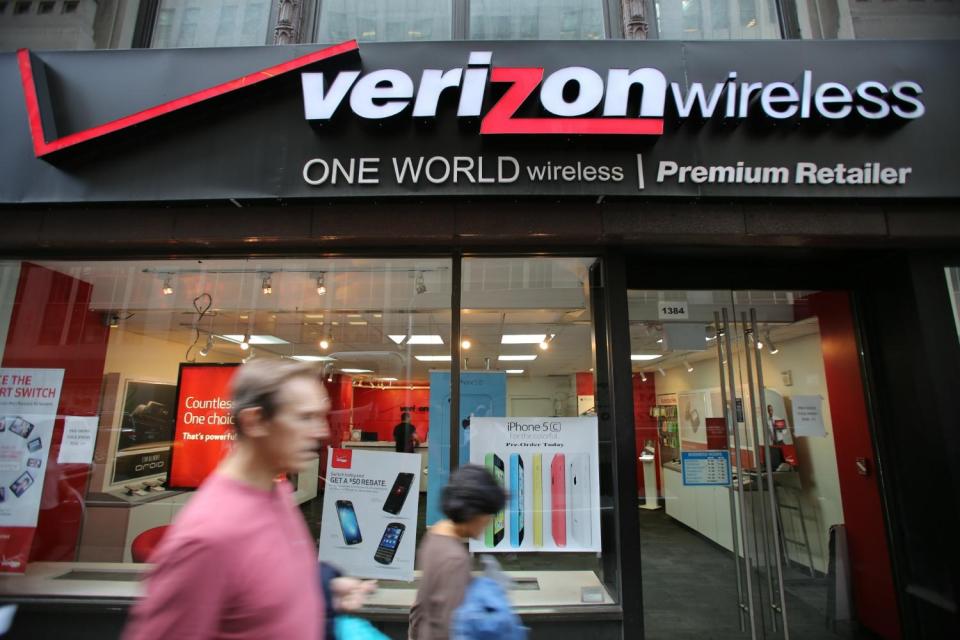ZTE, Huawei setbacks haven't deterred Chinese smartphone makers from the US market

It doesn’t seem like an ideal time for Chinese tech companies to penetrate the U.S. market. ZTE, in the center of the heated U.S.-China trade negotiation, almost went out of business after violating U.S. export control laws and lying about disciplining some executives. Now the telecommunications giant faces a huge fine. Earlier this year, AT&T (T) and Best Buy (BBY) dropped Huawei, China’s largest phone maker, amid national security concerns.
But all of that hasn’t scared Chinese smartphone makers away from the U.S., one of the largest smartphone markets in the world. In fact, some Chinese smartphone companies are pursuing their ambitions to enter the U.S.
Xiaomi, the world’s fourth-largest smartphone maker, hosted its first comprehensive product demo day in the U.S. in early June. “The U.S. market is extremely important to us,” said Donovan Sung, Xiaomi’s director of product management.
OnePlus released its latest model OnePlus 6 on its online store, through which it sells directly to U.S. consumers in late May. After achieving some success in the Asian and European markets, Chinese smartphone makers like Xiaomi and OnePlus believe they can win American consumers over by easing data privacy concerns.
Unlike Huawei and ZTE, Xiaomi and OnePlus focus on consumer products

Founded in 2010, Xiaomi has cultivated a loyal fanbase called Mi fan. It has also gradually expanded its offerings from smartphones to home appliances like robot vacuums. Xiaomi recently filed documents for what is expected to be the biggest IPO in four years.
Xiaomi said it’s not like Huawei and ZTE, both of which started with telecom and infrastructure businesses and later expanded into the consumer space. “We’re a very customer-focused company,” said Sung. “Our business is very direct in that way.”
This may make Xiaomi less likely to become a concern of “national security,” the reason cited by the U.S. government when it advises companies to stop doing business with firms like Huawei.
“It’s gonna be tricky for the people in the U.S. government concerned about the infrastructure issues and other particular brands [like] Huawei and ZTE to make the same case for Xiaomi and OnePlus,” said Paul Triolo, head of the geo-technology practice at research firm Eurasia Group. “Because there’s no history there, and it’s really just in the consumer space.”
But all Chinese companies are likely to face concerns over data privacy or potential links to the powerful central government. Xiaomi has suffered some backlash in India, where it has become the most popular smartphone brand. In 2014, the Indian Air Force had reportedly asked its personnel and their families not to use Xiaomi phones on security risks. In the same year, the company started to move overseas users’ data from its Beijing data center to data centers in the U.S. and India.
“All of our user data outside of China is stored in servers outside China,” said Sung. “We work very closely with partners like Amazon Web Services to make sure all of our user data sent securely.”
Carriers are the key to success

Chinese phone makers’ success in the U.S. market hinges much on their ability to strike a deal with U.S. carriers like AT&T and Verizon Wireless.
OnePlus’s unlocked phones seem to be selling well online. The OnePlus 5T was sold out in the U.S. four months after it was released. Last year, OnePlus doubled its global revenue to $1.4 billion and recorded 139% growth in North America, which accounts for about 25% of all the company’s online sales.
But OnePlus is still not mainstream in the U.S. One major reason is it isn’t one of the phones offered by the wireless carriers. It had been in talks with carriers since last year, but no deal has been announced. Xiaomi said it would also look into partnerships with carriers and other sales channels.
Huawei and Xiaomi have been able to gain momentum in Europe, another major market, because the smartphone market is not as centralized as it is in the U.S. About 66% of mobile unit sales in the U.S. is from wireless carriers, according to NPD Group, a market research firm. The European market is more segmented and open, said Zhang Jun, an analyst at Rosenblatt Securities. As local governments and consumers seek low-cost infrastructure and products, Chinese brands stand out. Huawei phones, for example, sell better than Apple iPhones in countries like Spain and Italy, according to research firm IDC.
In the U.S., if the government and carriers try to block a phone brand, it would be very hard for that company to gain access to mass consumers. When Huawei’s deal with AT&T collapsed, the phone maker laid off several people in the U.S. and some analysts expect it to exit the market.
Paul Triolo of Eurasia Group believes the U.S. government’s security concerns is the biggest roadblock for China smartphone companies. “The carriers really want to have vendor diversity,” Triolo said. “China brands, with good quality and at the right price point, can prove to be successful.”
Will you buy smartphones from Chinese brands? Write to Krystal Hu via [email protected] or follow her on Twitter.
Read more:
Goldman Sachs is slowing down tech hiring
Why Americans aren’t using their phones to make payments in stores
